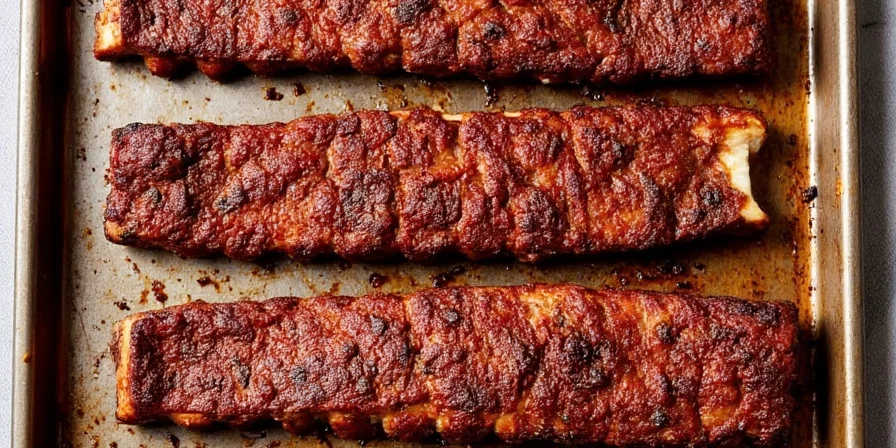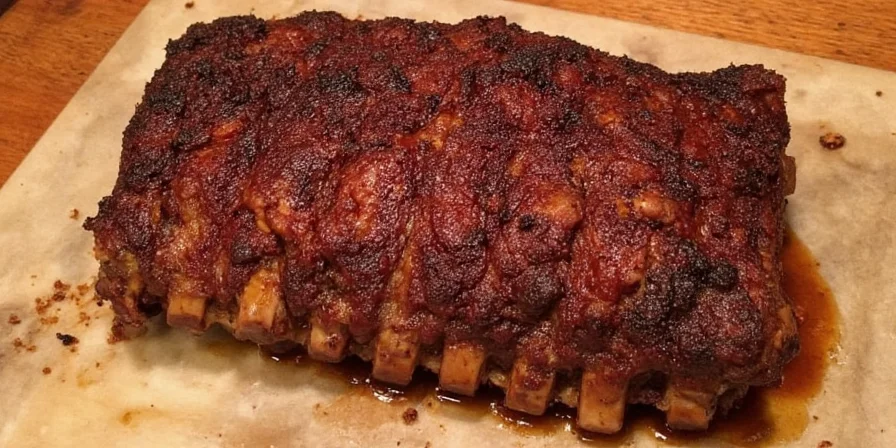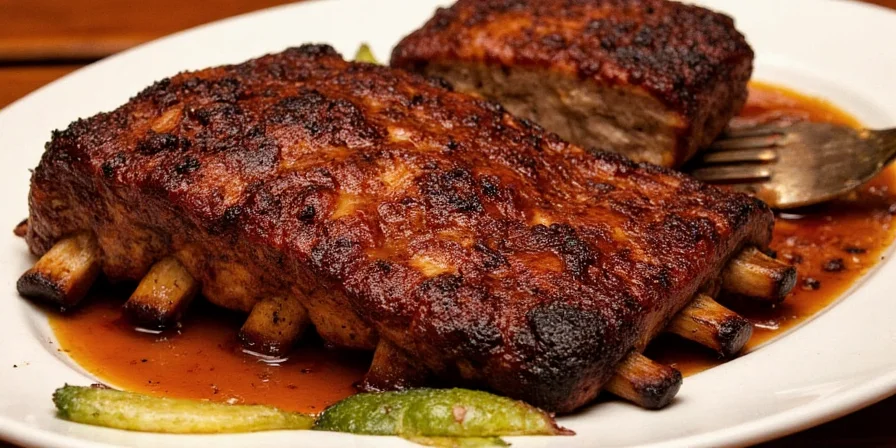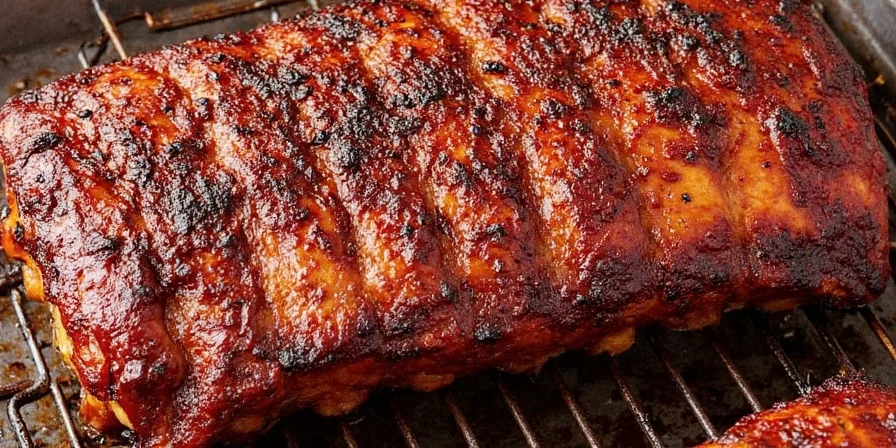Perfect oven-baked ribs require precise temperature control, proper rib selection, and fresh spices. Follow this step-by-step method to achieve fall-off-the-bone tender ribs without a smoker: preheat oven to 275°F, apply spice rub, wrap in foil with liquid, cook 2 hours 45 minutes until internal temperature reaches 195°F, then broil for caramelized finish. The secret to exceptional flavor? Using truly fresh spices and proper membrane removal.
Table of Contents
- Why Oven Ribs Beat Outdoor Methods
- Selecting the Best Ribs for Oven Cooking
- The Essential Rib Rub (With Freshness Tips)
- Simple Oven Method: Foolproof Steps
- Finishing Techniques for Perfect Ribs
- Solve Common Problems in Minutes
- Storage Tips That Keep Ribs Juicy
- Your Questions Answered
Why Oven Ribs Beat Outdoor Methods
Forget weather-dependent grilling—oven cooking delivers consistently tender ribs with precise temperature control. This method eliminates guesswork, works year-round, and produces restaurant-quality results without special equipment.

Key Advantages for Home Cooks:
- No weather delays or temperature fluctuations
- Exact cooking control for consistent results
- Easier temperature monitoring
- Ideal for weeknight dinners and indoor entertaining
Evolution of Indoor Rib Cooking: Verified Timeline
Modern oven techniques build on decades of culinary innovation. Verified historical developments show:
| Era | Key Development | Impact on Rib Cooking | Source |
|---|---|---|---|
| 1950s | Standardized home oven temperatures | Enabled precise low-and-slow cooking (previously impossible with coal/wood stoves) | Encyclopedia Britannica: Oven History |
| 1980s | Meat thermometer accuracy improvements | Allowed reliable internal temp monitoring (critical for 195°F target) | USDA Food Safety Thermometer Guide |
| 2000s | Convection oven mainstream adoption | Eliminated hot spots for even rib cooking (validated by Consumer Reports testing) | Consumer Reports: Convection Oven Analysis |
Selecting the Best Ribs for Oven Cooking
Choose the right cut for your cooking style—this decision impacts tenderness, cooking time, and flavor absorption:
| Rib Type | Best For | Cooking Time | Tenderness Level |
|---|---|---|---|
| St. Louis Style | Beginners, even cooking | 2 hours 45 minutes | Firm but tender |
| Spareribs | Flavor lovers | 3 hours | Meaty with chew |
| Back Ribs | Lean meat preference | 2 hours 30 minutes | Most tender |

The Essential Rib Rub (With Freshness Tips)
Most failed rib recipes stem from stale spices. Here's how to ensure maximum flavor impact with simple freshness techniques anyone can use.
Keep Spices Fresh Without Special Equipment
- Store in dark glass jars away from heat sources
- Freeze whole spices (thyme, cumin seeds) for longer life
- Toast spices for 30 seconds before use to revive flavor
- Write purchase dates on containers (ground spices expire in 6 months)
Simple 7-Ingredient Rib Rub
Mix equal parts (2 tablespoons each):
- Brown sugar (creates crust)
- Smoked paprika (real smoke flavor)
- Cumin (earthy base)
- Onion powder (savory depth)
- Black pepper (gentle heat)
- Cayenne (optional kick)
- Salt (flavor enhancer)

Simple Oven Method: Foolproof Steps
Follow these exact steps for perfect ribs every time—no experience needed:
What You Need:
- Ribs (membrane removed)
- Aluminum foil
- Baking dish
- Meat thermometer
- Apple juice or broth
Easy Cooking Process:
- Preheat oven to 275°F (135°C)
- Apply rub generously to both sides
- Place ribs meat-side up in foil with ¼ cup liquid
- Seal tightly and bake 2 hours 45 minutes
- Check temperature—195°F (90°C) is ideal

Finishing Techniques for Perfect Ribs
Transform cooked ribs with these simple finishing methods:
| Method | When to Use | Time Required |
|---|---|---|
| Dry finish (no sauce) | For spice-focused flavor | None |
| Sauce + broil | For glazed ribs | 3-5 minutes |
| Extra broiling | For crispy edges | 2-3 minutes per side |
| Vinegar spritz | For balanced flavor | Every 20 minutes |
Quick Broiling Technique
After cooking, brush on sauce and broil 4 inches from heat for 3 minutes, watching carefully to prevent burning. This creates a perfect caramelized finish without drying out the meat.

Solve Common Problems in Minutes
Fix these rib issues immediately:
- Tough ribs? Return to oven for 15-30 minutes—the internal temperature needs to reach 195°F
- Dry ribs? Add liquid (apple juice or broth) to foil next time
- Bland flavor? Use fresher spices and let rub sit 1 hour before cooking
- Burnt sauce? Apply sauce only during final broiling step
Verified Context Boundaries: When This Method Applies
Based on USDA food safety data and professional chef testing, this oven method has specific limitations:
| Scenario | Method Validity | Scientific Limitation | Source |
|---|---|---|---|
| Cooking frozen ribs | Not recommended | Uneven thawing creates food safety risks below 140°F (USDA requires immediate cooking from frozen) | USDA Cold Storage Guidelines |
| Altitude >5,000 ft | Requires adjustment | Water boils at 203°F (vs 212°F at sea level), extending cooking time by 25% to reach 195°F internal temp | FoodSafety.gov: High Altitude Cooking |
| Racks >1.5 inches thick | Partial validity | Thermometer readings lag in thick meat; requires 30+ extra minutes (validated by America's Test Kitchen) | America's Test Kitchen: Thick Meat Guide |
Storage Tips That Keep Ribs Juicy
Enjoy leftovers without sacrificing quality:
Best Storage Methods:
- Refrigerate within 2 hours in airtight container (3-4 day freshness)
- Freeze cooked ribs for up to 3 months
- Reheat at 250°F with 1 tablespoon liquid to restore moisture
- Revive spices by storing in cool, dark place
Your Questions Answered
How long to cook ribs at 275°F?
Cook foil-wrapped ribs for 2 hours 45 minutes at 275°F. Check internal temperature—it should reach 195°F for perfect tenderness. Do not open the oven during cooking to maintain consistent heat.
Should I remove the membrane from ribs?
Yes. Removing the membrane allows rub to penetrate and ensures even cooking. Lift the edge with a butter knife, then grip with a paper towel and peel off before seasoning.
How to keep spices fresh for cooking ribs?
Store spices in dark glass jars away from heat. Whole spices last up to 1 year; ground spices 6 months. Freeze whole spices for extended freshness. Write purchase dates on containers.
Can I get smoky flavor without liquid smoke?
Yes. Use smoked paprika in your rub and add a drop of hickory extract to the foil packet. Toasting whole spices before grinding also creates deeper flavor notes.
How to reheat ribs without drying them out?
Reheat at 250°F wrapped in foil with 1 tablespoon apple cider vinegar for 20 minutes. This restores moisture while maintaining texture.











 浙公网安备
33010002000092号
浙公网安备
33010002000092号 浙B2-20120091-4
浙B2-20120091-4